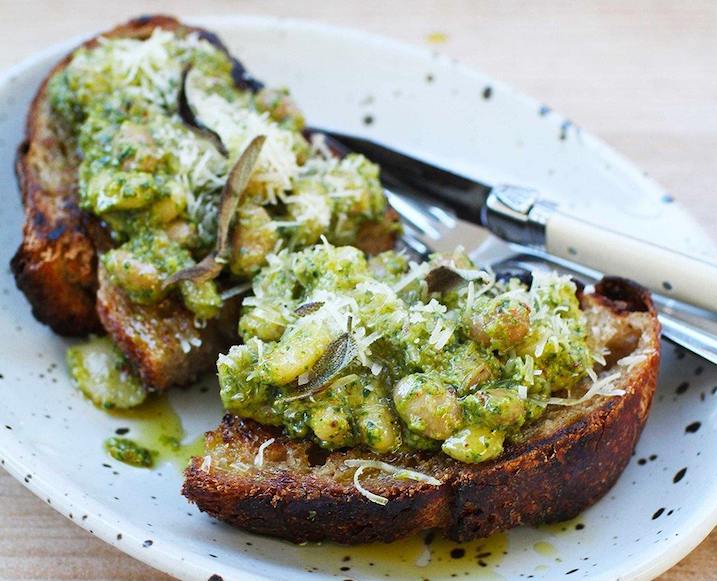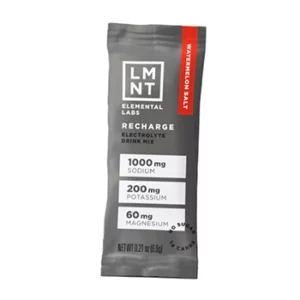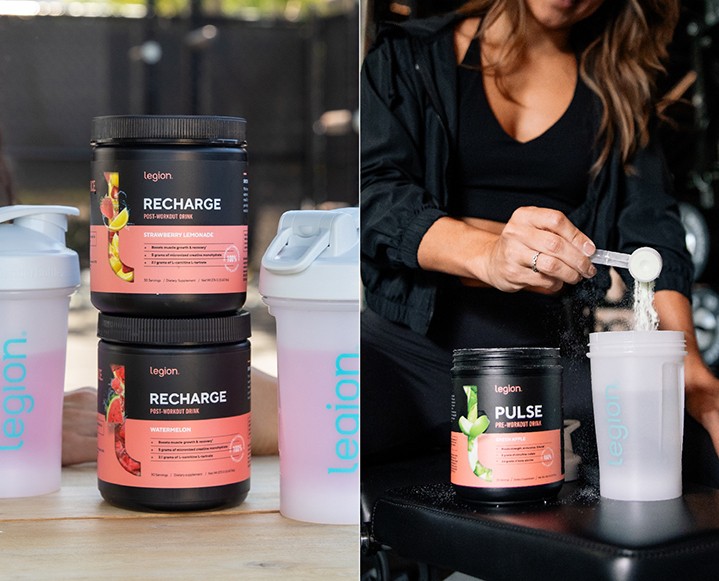We’re not all vegans here, though most of us whole-heartedly embrace the values of a plant-forward diet. Whether you’re staunchly vegetarian, are part of the regenerative agriculture community that believes in the value of grass-fed meats, or are a life-long carnivore who is just now becoming veggie-curious, there is much to be said for the humble bean.
As nutrition coach, Elissa Goodman pointed out on our pages just last week, “Legumes are a great source of clean protein, fiber, and iron. Research indicates that beans are one of the single most important predictors of longevity in older individuals, not only known to have slimming effects, but to help protect from heart disease, diabetes, and some forms of cancer.”
Beans have a bad rap — mainly because few of us ever learned to cook them correctly. If beans are not pressure cooked or traditionally prepared through soaking and rinsing, then they can lead to major gastrointestinal distress — a big reason that so many people avoid them.
Beans also have a reputation as a sub-standard or ho-hum side dish, a notion that Lesley Sykes and her sister Renee are on a mission to correct. The sisters argue that most Americans have only been exposed to a tiny fraction of the incredible bean varietals and recipes available on the planet. Through their simple, direct-to-consumer brand, Primary Beans, the women are hoping to support the slowly reviving interest in a plant group full of promise for our personal health and the health of the planet…
The Chalkboard: Lesley, we see wellness brands popping up every day around here, most of them based on new concepts and ingredients in the market. Beans have gone mostly overlooked and haven’t garnered a very ‘sexy’ reputation in all this plant-based business. Why beans?
Lesley Sykes: Dried beans are the perfect food! That said, they need a makeover in the U.S., where they’re associated with times of scarcity rather than indulgence.
Beans are highly nutritious, good for the planet, easy to cook, and extremely delicious. Packed with protein, fiber, and key nutrients, beans keep you fuller longer, and make simple, everyday meals feel deeply nourishing and effortlessly satisfying.
Dried beans available at a typical U.S. grocery store are limited to certain varieties and can be old, which alters cooking times and flavor. As more people in the U.S. are looking to lead a more plant-forward lifestyle, beans are often overlooked as a staple ingredient.
Primary Beans is on a mission to ensure that home cooks across the country have the best experience. We work with a talented network of farms in the U.S., Mexico, and soon, globally, to thoughtfully source flavorful bean varieties. Specific harvest information is included on each bag.
We’re passionate about showing home cooks how easy and approachable dried beans can be by providing education that debunks commonly held myths and showcases how beans are prepared around the world. We hope to help people deepen their connection to food and where it comes from.
TCM: Let’s break down the basic nutritional profile of beans a bit…
LS: Beans pack in an average of 21-24 grams of protein per 1-½ cups — it varies by bean. That’s as much protein as 1 cup Greek yogurt, 3.5 eggs, 5.5 tablespoons peanut butter, ½ salmon fillet, or 3 ounces ground turkey!
If you’re vegetarian or an occasional meat eater, beans can be an especially important source of, not only protein, but also iron and zinc. Additionally, beans are a key dietary source of B vitamins, potassium, magnesium, among other nutrients.
Beans are also a no-brainer for getting more fiber in your diet, which is critical for a healthy gut and reduced risk of so many diseases. Just one cup provides an average of 16 grams of fiber — varies by bean, which is over half of the USDA’s recommended daily amount.
A little known fact is that colored beans – like red, black, and purple beans – contain impressive levels of antioxidants in their outer coats, similar to some fruits and vegetables!

Photo credit: Catherine Owens
TCM: So many health-conscious and eco-conscious readers are looking to reduce their conventional meat consumption. How can beans play a role there?
LS: I’m what I call a mindful meat-eater. I’ll have a meat-centric dish on occasion, and I sometimes use small amounts of meat and animal fat to flavor any given dish. Otherwise, I can go days without eating meat and not really miss it thanks to the variety of textures and flavors provided by beans and other plants.
A well-seasoned bowl of brothy beans always feels indulgent and nourishing. Beans are also great stand-ins for meat in certain recipes: simmered in curries, as a filling in tacos, or tossed in a salad. And electric pressure cookers (like an Instant Pot) have made bean cooking at home especially convenient by cutting down the cooking time by more than half.
TCM: You offer all 10 of the below bean varietals, would you give us some basic ideas for each?
LS: We include flavor profiles and pairing recommendations on each bag. We want to make it super easy to understand how to celebrate our beans’ individual personalities!
Flor de Junio (organic): Cook them into a big pot of Mexican-style beans seasoned with onion, garlic, dried chile, lard or neutral oil.
Bayo (organic): Like a firmer, creamier pinto, they’re one of the best choices for refried beans and other Mexican-inspired recipes.
Negro (organic): Enjoy them in soups and stews that feature their bold broth. Season with a simple sofrito of peppers, onions, garlic, and cilantro.
Cannellini: Creamy yet firm, they’ll hold up in just about anything – soups and stews, pasta dishes, and marinated salads. These beans also make a luscious puree.
Chickpea (organic): Perfect for adding creamy body to soups, curries, dips, salads. Or, turn them into a crunchy snack by tossing with some salt and olive oil and roasting for 50 to 60 minutes at 350 degrees F.
Alubia (organic): Firm and mild, they’re great for hearty meals and refreshing salads alike, and readily absorb flavor.
Cranberry: Great for stews and other brothy dishes since they produce a rich, meaty broth.
Michelet: Good for hearty soups and stews that include fatty meats and rich broth or stock as the base.
Ayocote Morado (organic): Adds big flavor and texture to salads, soups, and stews, and pairs especially well with dark leafy greens and salty cheeses.
Mayocoba: Shines as brothy or refried beans, and are a good substitute for creamy white beans.
TCM: Let’s talk about beans’ bad reputation for causing indigestion. The key is to soak, sprout or cook with kombu, but do you have an even easier strategy?
LS: Beans contain certain types of fiber that play an important role in our digestive system, but can be difficult to digest, so that’s where the unwelcome side effects can happen. The good news is that your body can get used to your bean-forward lifestyle – if you’ve experienced issues, you may not be used to the influx of fiber. In fact, most Americans get far less than the recommended amount of fiber in their diet. Undercooked beans also create extra work for the digestive system. For the best outcome, I’d recommend eating beans regularly and making sure they are fully cooked.
TCM: Many Americans think of beans as a Central American food, but cultures around the world have relied on beans for ages, correct?
LS: Yes, that’s right! Essentially every country has a celebrated bean dish: pasta e fagioli in Italy, frijoles negros in Cuba, rajma chawal in Northern India, hummus in the Middle East, red red in Ghana, feijoada in Brazil, cassoulet in France, the list goes on.
The majority of the bean varieties we know today, with few exceptions, originated from the common bean (phaseolus vulgaris), which is native to Mesoamerica and the Andes. I started traveling the world in my mid-twenties, and appreciated the opportunity to absorb myself in different cultures through food. Each trip, I fell in love with a new ingredient or cooking technique, and beans seemed to be the common denominator across all the places I traveled.
TCM: We can’t talk about beans without talking about hummus. Any great tips?
LS: My secret to delicious hummus at home is great ingredients and a few simple tips. Start with dried chickpeas and cook them with aromatics to infuse them with flavor – I usually keep it simple with garlic, olive oil, and bay leaves.
Once cooked, simmering the chickpeas in a teaspoon or so of baking soda really breaks them down (don’t forget to rinse), which makes for ultra-creamy hummus. Then blend with the standard ingredients like tahini and with just enough ice-cold water so that it turns into a thick dip. I encourage you to experiment with flavorings (blended in or as toppings). Some of my current favorites include: harissa paste, roasted carrots, smoked paprika, cilantro, and lemon zest.















